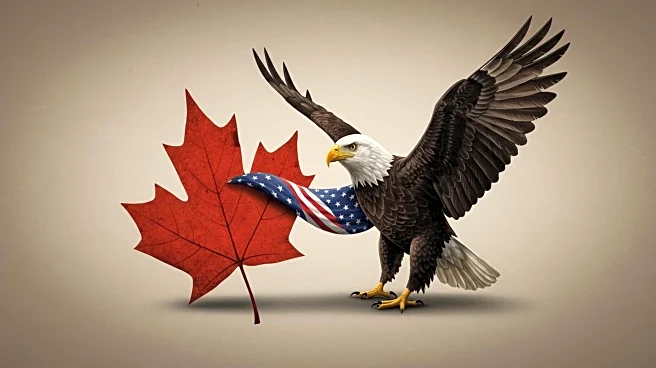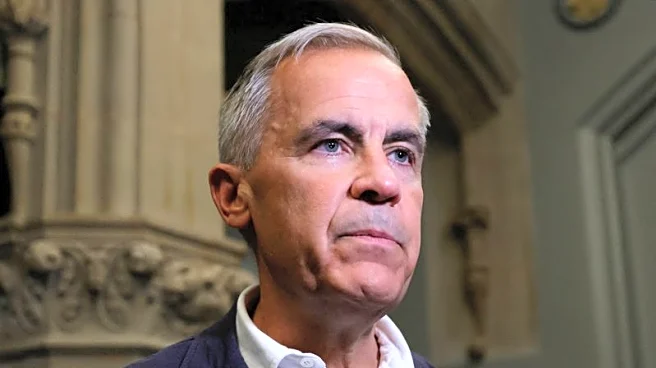What's Happening?
Canada has announced the removal of many retaliatory tariffs to align with U.S. tariff exemptions under the United States-Mexico-Canada Agreement (USMCA). Prime Minister Mark Carney stated that this move is intended to facilitate further trade discussions with the United States. The USMCA, which is up for review in 2026, currently allows over 85% of Canada-U.S. trade to remain tariff-free. This decision comes after a phone conversation between Carney and President Trump, where they discussed resetting trade negotiations. Despite some criticism from Canadian politicians and union leaders, Carney emphasized the strategic advantage of maintaining a favorable trade relationship with the U.S.
Why It's Important?
The adjustment in Canada's tariff policy is significant as it aims to preserve and potentially enhance trade relations with the United States, Canada's largest trading partner. By aligning with U.S. tariff exemptions, Canada seeks to maintain its competitive edge in the U.S. market, which is crucial given that over 75% of Canada's exports are directed to the U.S. This move could also influence future trade negotiations and economic policies between the two countries. However, it has sparked debate within Canada, with some viewing it as a concession to U.S. demands, potentially affecting domestic industries like steel and aluminum.
What's Next?
As the USMCA is set for review in 2026, both Canada and the U.S. are likely to engage in further negotiations to address outstanding trade issues. The Canadian government may face pressure from domestic stakeholders to ensure that any future agreements protect Canadian industries from U.S. tariffs. Additionally, the outcome of these negotiations could impact the broader North American trade landscape, influencing economic policies and trade strategies in the region.













